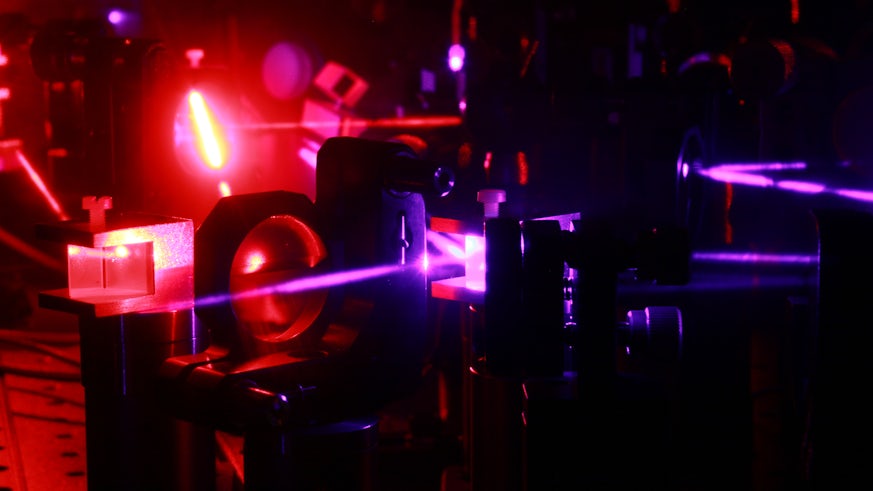Gold particles allow detection of nanoscale processes
7 November 2017

A new method of tracking chemical and biological processes at a nanometre scale has been uncovered, combining expertise from physics and life sciences.
Rapid tracking of objects at an incredibly small scale with high precision can be hugely problematic for researchers. But researchers from Cardiff University have been able to develop a novel technique that addresses this issue by using gold particles.
Professor Paola Borri, from Cardiff University’s School of Biosciences, and Professor Wolfgang Langbein, from Cardiff University’s School of Physics and Astronomy, have developed a cutting-edge technique to precisely and rapidly measure the 3D position of a single nano-object.
Paola said: “Currently, fluorescent tags are often used to achieve the necessary optical contrast to detect the dynamics and interaction in chemical and biological processes at a nanoscale.
“There interaction happen at an incredibly small scare and in under a millisecond.
“Despite significant advances, rapid tracking of these nano-objects in 3D with precision and in an environment that scatters light remains challenging.
“Our method exploits the strong optical absorption and scatter of a single gold nanoparticle, providing sensitive and specific particle detection.”
The novel technique addresses the issues of tracking biological and chemical processes by using a single gold nanoparticle that is between 15 nanometres and 30 nanometres in size.
This research has produced a method that is able to detect with a precision better than 20 nanometres in plane and 1 nanometre axially, at a timescale of one millisecond.
“Our technique paves the way to a new form of single-particle tracking.
“The method allows the detection of the particle’s position and orientation with incredible precision.
“This addresses the issues facing researchers and gives us unprecedented information about a particle’s complex dynamics while moving within a disordered 3D environment,” added Paola.

